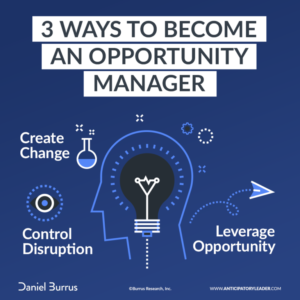As a creative talent agency, we frequently encounter and hire professionals with elaborate, immaculately designed marketing, creative, and digital portfolios.
The portfolio is a staple career growth and job hunting asset among creatives. Understandably so: they’re a perfect match.
Many of these portfolios, whether in an online or physical edition, are veritable art galleries. They display carefully composed graphics, clever copy, or slick web content in a compelling manner honed from years of education and experience.
But a portfolio doesn’t have to look like a perfectly curated art museum brimming with masterpieces in order to be a valuable tool to almost any marketing professional. Whether you’re a social media marketer, project manager, Google Analytics consultant, automation specialist, or media buyer, you have the potential to build a work portfolio of some kind.
With a little effort, your portfolio can be almost as effective in showing off your skills and experience as a traditional creative one.
Get Creative

You don’t have to BE a creative to be creative with your portfolio.
You can show your creativity in other ways. And that’s important, because businesses want marketing professionals who can bring innovative ideas and new perspectives to the table in all aspects of their marketing. If you think of an unconventional or clever way to display your past work and experience, that goes a long way towards making yourself stand above others in your field.
Think about it. How can you showcase past work that doesn’t have a strong visual element? Are there any underused platforms you could use to showcase your portfolio that would be especially relevant to your field of work? How can you show your personality and character in your portfolio?
Need some inspiration? Check out these Mind-Blowing Marketing Resumes for some examples of how you can go above and beyond the traditional channel.
Remember; outside of creatives, most marketing professionals don’t have a portfolio. So having anything at all–even something very straightforward–gives you a huge advantage over competitors for a job.
Tell a Story

Show how long-term projects and campaigns developed and evolved over time.
This is something even great creatives often fail to do. For instance. a graphic designer might have some gorgeous advertisements to show off in their portfolio. But they’ll neglect to mention the goal of those ads, the strategy behind the art direction, or the results they drove. Making pretty pictures to woo a creative talent agency is one thing. Designing compelling, engaging art that moves the needle is another.
Similarly, you can use your portfolio to walk viewers through some of your success cases. Explain the problem/challenge, the strategy that was developed to overcome it, the goal/KPIs, and how your mission evolved over time. Show where adjustments and improvements were made, and the final results of your efforts.
When In Doubt, Point to ROI

The most beautiful thing a hiring manager or marketing recruiter can see in a portfolio, even more than eloquent blog posts or mind-boggling interactive images, is dollar signs.
If you’re struggling to think of ways to showcase your work, try featuring your results instead. How did you impact the bottom line of your business?
Tangible ROI is preferable, but is not always possible. Perhaps you’re unable to disclose hard dollar amounts due to legal reasons, or didn’t have a broad enough view of the customer funnel in your role to see where your marketing work translates into revenue. That’s okay.
Instead, perhaps you can share how you improved productivity using a percentage change. Or point to ROI-related metrics that you did have access to: brand awareness, customer satisfaction, content engagement, email responses, etc. Or explain how you made obvious, significant improvements to a system or campaign that made it more streamlined and less costly. Again, creativity (see above) is key here.
Keep it Clean
Don’t even have to be a particularly design-minded marketer or a strong writer to produce a powerful portfolio.
However, it should be free of obvious errors and mistakes. Lack of creative training or experience working with a creative talent agency doesn’t excuse a sloppy mess riddled with errors.
Attention to detail is important for any marketer. So are basic communication skills. Make sure your portfolio shows that you have both.
Digital Portfolio Hosting Options
There are plenty of viable platforms available to host you portfolio, depending on the kind of work you want to share, the amount of control you wish to have over it, and your budget. Research online to find the best option, or try one of these that we recommend:
Coroflot
This site is a great platform for showing off your creations in a clean, sharp, modern design. There aren’t a lot of bells and whistles, so if you’re the kind of person who wants lots of customization options and functionalities you should consider another option. But Coroflot is refreshingly simple and fast to set up. The portfolio-building tool is very user friendly and intuitive, the perfect option for someone who needs a no-frills way to let their work speak for itself.
Carbonmade
Another fairly straightforward portfolio site, Carbonmade boasts simplicity and a quirky attitude. Really; the site is covered in unicorns and their dogs are listed as staff. It’s worth checking out just for the fun factor.
But beneath the bright, colorful surface of whacky vocabulary and cute icons is an effective and functional portfolio-building tool. Just pick from a handful of premade Themes, insert your work and publish. Portfolios look clean and professional—if a little bit uniform.
Pinterest:
Pinterest is well known as the go-to website for finding DIY inspiration, fashion trends and more gluten-free recipes than you can imagine.
Becoming active on this explosively popular online bulletin board is a great way to break from the mold and highlight your accomplishments online. Because of Pinterest’s visual focus, a portfolio here can be far more effective than a stuffy list, boring paragraph or dated profile. If used right, this visual social network just might be the gateway to your next gig.
Behance
We’ve seen many marketers’ portfolios built with Behance’s Prosite service. This platform allows for a lot of customization, starting from one of several base layouts and modifying from there. With features like blog integration and the ability to custom-craft column sizes, it allows you to personalize and get very creative. And it allows HTML and CSS customization if you’re comfortable with modifying code.
The DIY Portfolio
If you’re confident in your coding and design skills, you can really impress hiring managers and marketing staffing firms by placing your portfolio on a website that you build yourself. It’s never been easier to put together an attractive website of your own, even if you don’t have a lot of web development experience. This has a number of benefits:
- Complete control of everything that shows up on the page—no potentially distracting advertisements or portfolio site logos.
- An additional opportunity to show off your creative, web design and programming abilities—incredibly valuable traits in any modern marketer.
- Greater flexibility to craft your portfolio in a way that matches your vision and personal brand.
(61)
Report Post







